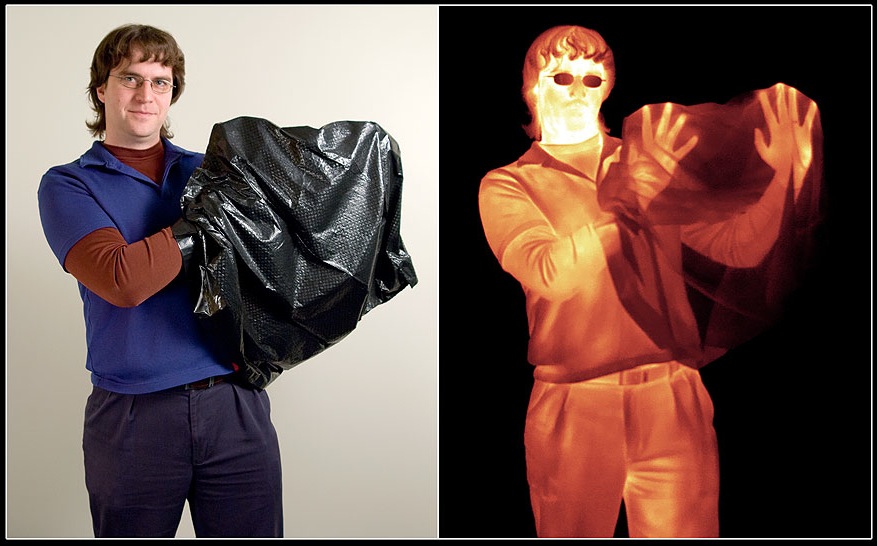

Human Eye Sometimes Sees the Unseeable
看到红外线!
Under certain conditions people can catch a glimpse of usually invisible infrared light. Karen Hopkin reports
在某些情况下,人眼是可以瞥见红外线的身影的。
撰文/播音 凯伦?霍普金(Karen Hopkin)
翻译 李轩
Sometimes it’s hard to see the light. Especially if it lies outside the visible spectrum, like x-rays or ultraviolet radiation. But if you long to see the unseeable, you might be interested to hear that under certain conditions people can catch a glimpse of usually invisible infrared light. That’s according to a study in the Proceedings of the National Academy of Sciences. [Grazyna Palczewska et al, Human infrared vision is triggered by two-photon chromophore isomerization]
有些光,我们看不到,尤其是在可见光谱外的那些光线,比如X光或紫外光。不过,如果你特别好奇不可见光是什么样,你可能会对此很感兴趣:一篇发表在《美国国家科学院院刊》的研究称,在一些特殊条件下,人眼可以一瞥平时无法看到的红外光的身姿。
Our eyes are sensitive to elementary particles called photons that have sufficient energy to excite light-sensitive receptor proteins in our retinas. But the photons in infrared radiation don’t have enough oomph. We can detect these lower energy photons using what are sometimes called night-vision goggles or cameras. But the naked eye is usually blind to infrared radiation.
我们眼睛对称作光子的基本粒子很敏感。可见光的光子携带的能量可以激活视网膜上的感光受体蛋白,而红外光的光子却劲力不足。通常,借助夜视镜或夜视仪我们才能感知到这些低能光子,裸眼是无法看到红外线的。
But recently researchers in a laser lab noticed that they sometimes saw flashes of light while working with devices that emitted brief infrared pulses. So they filled a test tube with retinal cells and zapped it with their lasers. When the light pulses rapidly enough, the receptors can get hit with two photons at the same time—which supplies enough energy to excite the receptor. This double dose makes the infrared visible.
不过最近激光实验室的研究人员发现,当使用发射红外脉冲的仪器时,他们有时可以看到闪光。为了一探究竟,研究人员在试管中放入视网膜细胞并用他们的激光仪器照射。如果脉冲足够快,受体蛋白有时会同时受到两个光子的撞击,这样就有足够的能量激活受体蛋白。从而加倍剂量的光子让红外线可见。
One application of the finding is that it could give doctors a new tool to diagnose diseases of the retina. So they could eyeball trouble before it might otherwise be seen.
这个新发现可能可以成为医生发现视网膜疾病的新工具。从而,他们可以在问题“可见”前发现问题。
 京公网安备11010502039775号
京公网安备11010502039775号